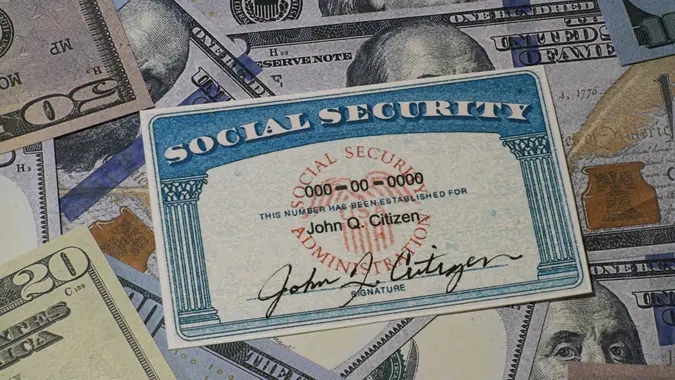5 Things You Need To Know About Social Security If You Plan To Retire in 2025

Commitment to Our Readers
GOBankingRates' editorial team is committed to bringing you unbiased reviews and information. We use data-driven methodologies to evaluate financial products and services - our reviews and ratings are not influenced by advertisers. You can read more about our editorial guidelines and our products and services review methodology.

20 Years
Helping You Live Richer

Reviewed
by Experts

Trusted by
Millions of Readers
One thing you can expect from Social Security is that some kind of change will be implemented every year, and 2025 will be no exception.
If you plan to retire in 2025 and file for Social Security retirement benefits, there’s a lot you’ll need to keep up with. A good place to start is by opening a “my Social Security” account if you haven’t already done so.
Here are five things to know about Social Security if you plan to retire in 2025.
How Your Benefits Are Determined
Monthly Social Security payments are based on your 35 highest earning years, which the Social Security Administration (SSA) keeps up with through the payroll taxes you had withheld through the years.
You can double-check your earnings record through a my Social Security account. If something looks wrong, contact the SSA. Also, double-check to make sure your expected benefits look accurate based on your earnings.
The age at which you file for benefits also plays a big role in your monthly check. You can apply as early as age 62, but the longer you wait, the higher your payment will be.
Full Retirement Age
The full retirement age (FRA) for Social Security is the age at which you are entitled to your full monthly payment based on your career earnings record.
The FRA for nearly all new applicants is either 66 or 67, depending on your birth year. Visit the SSA’s retirement age calculator to find if you’ll reach full retirement age in 2025.
Cost-of-Living Adjustment
In most years, the SSA issues an annual cost-of-living adjustment (COLA) to account for inflation.
In 2025, the COLA is 2.5%, meaning checks will be 2.5% higher next year than in 2024. The adjustment will boost the average retirement check by $48 a month, according to The Senior Citizens League.
The 2025 COLA is the lowest since 2021 and down from 3.2% this year, mainly because of the nation’s falling inflation rate. Over the last decade, the COLA increase has averaged about 2.6%, according to the SSA.
The COLA formula is based on third-quarter inflation as measured by the Consumer Price Index for Urban Wage Earners and Clerical Workers (CPI-W). Nearly 68 million Social Security beneficiaries will see a 2.5% COLA beginning in January 2025.
Income Taxes on Benefits
About 40% of Social Security beneficiaries must pay federal income taxes on their benefits, according to the SSA. This typically happens when you have provisional income in addition to your benefits, which might include wages, interest, investment returns, and dividends.
For single filers who haven’t yet reached full retirement age, benefits aren’t taxed if your provisional income is less than $25,000. That rises to $32,000 if you’re married and filing a joint return.
Up to half of your Social Security benefits might be taxable if your provisional income is $25,000 to $34,000 for single filers, or $32,000 to $44,000 for joint filers. For anything above those income levels, up to 85% of your benefits could be taxable.
If you are past full retirement age when you begin collecting Social Security in 2025, you don’t have to worry about your benefits being taxed.
Earnings Test
If you receive Social Security benefits but still earn outside income by working, the SSA has an earnings test that reduces your benefits before you reach full retirement age. Even if you’re officially retired, this might apply if you have a side gig or some other income source.
If you are under FRA for the entire year, the SSA deducts $1 from your benefit payment for every $2 you earn above the annual limit. The SSA counts your earnings only up to the month before you reach your FRA — not your earnings for the entire year.
For 2024, the limit for recipients not reaching FRA is $22,320, but that will rise to $23,400 in 2025.
More From GOBankingRates
- Nearly 1 in 3 Americans Hit by a Costly Holiday Scam, Norton Survey Shows -- How To Avoid This
- Here's What the Average Social Security Payment Will Be in Winter 2025
- How Middle-Class Earners Are Quietly Becoming Millionaires -- and How You Can, Too
- The Easiest Way to Score $250 for Things You Already Do
 Written by
Written by  Edited by
Edited by 

























